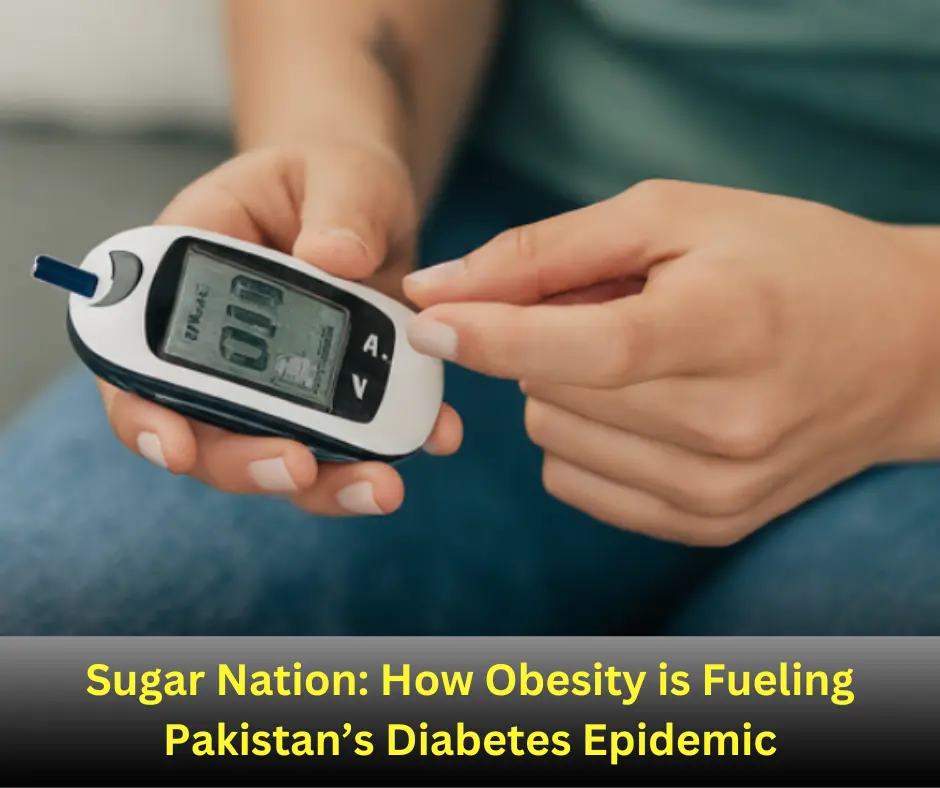Pakistan is grappling with a severe diabetes crisis, largely driven by the alarming rise in obesity across the nation. This escalating health issue is creating a significant burden on the healthcare system, threatening the well-being of millions, and calling for urgent policy interventions.
Understanding the Diabetes Epidemic
Pakistan has the highest comparative diabetes prevalence rate in the world, with over 33 million individuals currently living with the condition. By 2045, this number is expected to nearly double, reaching 62 million. The situation is exacerbated by the fact that more than a quarter of these cases are undiagnosed, leaving millions vulnerable to severe health complications.
The Obesity-Diabetes Connection
Obesity is a major contributing factor to the diabetes epidemic in Pakistan. Over 40% of the population is categorized as overweight or obese, which directly correlates with the rising incidence of type 2 diabetes. The prevalence of obesity is not limited to adults; alarmingly, it is also on the rise among children under five, nearly doubling from 2015 to 2024.
Key Contributing Factors:
- Dietary Habits: The consumption of sugary drinks and ultra-processed foods, which are high in sugar, salt, and trans fats, is widespread. These dietary choices contribute significantly to weight gain and increased risk of diabetes.
- Lack of Physical Activity: Pakistan faces a shortage of public spaces and facilities for physical exercise, especially in urban areas. Many schools lack playgrounds, depriving children of the opportunity to engage in physical activities, further exacerbating the risk of obesity and diabetes.
- Economic Factors: Poverty also plays a crucial role. With over 22% of the population living below the poverty line, access to proper healthcare and diabetes treatment is limited. The high cost of diabetes management, including insulin and medications, makes it unaffordable for many.
The Need for Urgent Policy Action
Health experts are calling for immediate and robust policy actions to address this crisis. Measures such as imposing higher taxes on sugary drinks and ultra-processed foods, introducing front-of-pack warning labels, and restricting marketing of unhealthy foods, particularly to children, are being advocated.
Additionally, there is a pressing need to increase public awareness about the dangers of obesity and diabetes, emphasizing lifestyle changes, healthier diets, and the importance of regular physical activity.
Key Statistics on Pakistan’s Diabetes Epidemic
| Statistic | Value |
|---|---|
| Diabetes Prevalence Rate (2021) | 30.8% (Highest globally) |
| Number of People Living with Diabetes (2024) | 33 million |
| Projected Number of People with Diabetes (2045) | 62 million |
| Percentage of Population Overweight/Obese | Over 40% |
| Increase in Overweight Children Under Five (2011-2018) | Nearly doubled |
| Health Budget as Percentage of GDP | Less than 1% |
| Population Living Below the Poverty Line | 22% |
Conclusion: A Call to Action
The diabetes epidemic in Pakistan is a multifaceted problem that requires a comprehensive approach. While policy measures are crucial, public participation in adopting healthier lifestyles is equally important. The government, healthcare professionals, and civil society must collaborate to combat this growing crisis, ensuring a healthier future for Pakistan.
In Short:
- Pakistan has the highest global diabetes prevalence rate.
- Obesity is a key driver, with over 40% of the population overweight.
- Poor dietary habits and lack of physical activity contribute significantly.
- Economic factors like poverty and high healthcare costs worsen the situation.
- Urgent policy actions are needed to curb the obesity and diabetes epidemic.
This situation in Pakistan is a dire warning of what happens when lifestyle changes and public health interventions lag behind the increasing burden of non-communicable diseases. Immediate and coordinated action is essential to reverse these alarming trends and prevent the further escalation of diabetes and obesity-related complications.

